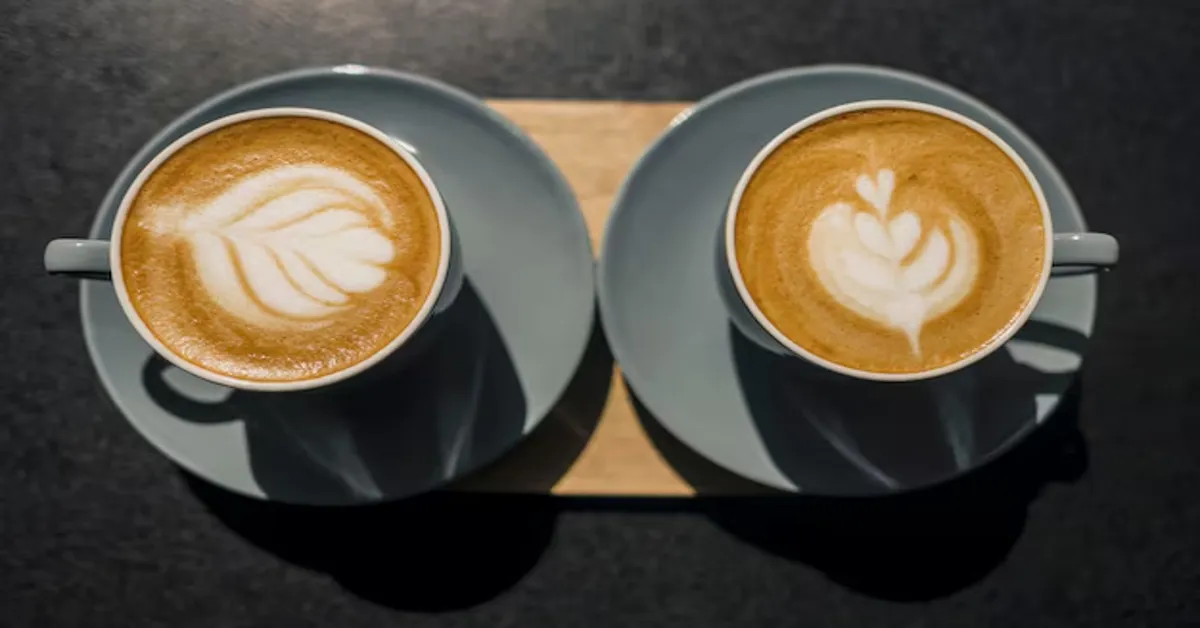When it comes to coffee, the options can feel overwhelming. Two popular choices often lead to passionate debates among aficionados: cappuccino vs latte. While both drinks originate from the same base of espresso, they each bring their own unique charm and flavor profile to the table. So, how do you decide which one is right for your coffee cravings? Whether you’re a seasoned barista or just exploring your caffeine preferences, this guide will help you understand these beloved beverages better. Get ready to dive deep into the world of frothy milk and rich espresso as we explore what sets cappuccinos apart from lattes!
What is a Latte?
A latte is a creamy coffee beverage made with espresso and steamed milk. It’s known for its smooth texture and mild flavor, making it a favorite for many coffee lovers. The balance between the strong notes of espresso and the velvety milk creates a harmonious drink that appeals to those who enjoy both boldness and comfort in their cup.
Typically, a standard latte consists of one part espresso to three parts steamed milk, topped with a thin layer of microfoam. This foam is essential; it adds an airy quality while also allowing for artistic designs on top—a skill many baristas take pride in mastering. The result is not just delicious but visually appealing as well.
Lattes can be customized easily, thanks to their versatile nature. You can add flavored syrups like vanilla or caramel for an extra kick or even incorporate seasonal spices such as cinnamon or pumpkin spice during the fall months. This adaptability keeps lattes exciting year-round.
Many enjoy sipping lattes at cozy cafes where they become more than just drinks—they’re experiences shared among friends or moments of solitude with good reading material.
With their origins tracing back to Italy, lattes have evolved globally into various styles and interpretations but always maintain that signature creamy feel that makes them so comforting.
Latte Origins
The latte has a rich history that traces back to the coffee culture of Italy. Its name comes from “caffè e latte,” which translates to “coffee and milk.” This simple yet delightful combination began enchanting coffee lovers in Italian cafes during the early 20th century.
As espresso gained popularity, so did this creamy concoction. The process involved pulling a shot of espresso and adding steamed milk, creating a velvety texture that appealed to many palates. Over time, variations emerged across different regions, further shaping the drink’s identity.
In America, lattes found their way into mainstream coffee shops in the 1980s. Baristas started experimenting with flavors like vanilla and caramel, transforming traditional recipes into modern favorites. The latte quickly became synonymous with cozy coffee shop vibes.
The emergence of artful foam designs added an artistic touch to lattes as well. As baristas honed their steaming techniques, they created intricate patterns atop each cup. Latte art turned drinking coffee into an experience rather than just a routine.
Today’s lattes are versatile drinks enjoyed around the world. From classic versions served simply with steamed milk to elaborate flavored varieties topped with whipped cream or syrups—each iteration celebrates its Italian roots while inviting personal creativity.
Cappuccino vs Latte: What’s the Difference?
Cappuccinos vs lattes may seem similar at first glance, but they have distinct differences that set them apart. Both drinks are espresso-based, yet the proportions of milk and foam create unique textures and flavors. Understanding these variations can elevate your coffee experience.
A cappuccino typically consists of equal parts espresso, steamed milk, and foam. This three-part harmony results in a rich flavor with a velvety texture. The foam on top is usually thicker than what you find in a latte, providing an airy contrast to the robust espresso beneath.
On the other hand, lattes feature more steamed milk than cappuccinos. With one part espresso to two parts steamed milk and just a light layer of foam on top, lattes present a creamier mouthfeel. This drink tends to soften the strong taste of coffee while allowing for various flavored syrups or toppings.
The visual appeal also differs between these beverages. A well-made cappuccino has beautiful microfoam art on its surface due to its thicker consistency. Lattes often showcase intricate designs as well but tend to be less pronounced because of their smoother texture.
When deciding which drink suits your mood or craving better—cappuccino vs latte—it ultimately comes down to personal preference regarding flavor intensity and creaminess.
How to Make Your Own Latte
Making your own latte at home is surprisingly simple and rewarding. First, gather your essentials: fresh espresso beans, milk of your choice, a coffee grinder, an espresso machine or stovetop moka pot, and a frother if you have one.
Start by brewing a shot of rich espresso. If you’re using whole beans, grind them to a fine consistency just before brewing for the best flavor. The perfect ratio is typically one part espresso to three parts steamed milk.
Next comes the milk. Heat it gently on the stove or in the microwave until it’s warm but not boiling—around 150°F is ideal. If you have a frother or steam wand attached to your espresso machine, now’s the time to create that velvety microfoam everyone loves so much.
Pouring is an art! Start with the brewed espresso in your cup and slowly add steamed milk while holding back foam with a spoon. Once you’ve added most of the milk, top it off with foam for that classic latte look.
Feel free to get creative! Add flavored syrups like vanilla or caramel for an extra twist or sprinkle some cocoa powder on top for visual appeal and taste enhancement. Enjoy sipping on your homemade masterpiece as you explore more about cappuccino vs latte differences along the way!
Cortado Coffee: An Espresso-Based Drink
Cortado coffee is a delightful espresso-based drink that has gained popularity among coffee enthusiasts. Originating from Spain, this beverage offers a unique balance between espresso and steamed milk. The name “cortado” means “cut” in Spanish, referring to the way the milk cuts through the intensity of the espresso.
What sets cortado apart is its ratio of milk to coffee. Typically, it consists of equal parts espresso and steamed milk, creating a rich yet smooth texture. This harmony allows you to savor both the bold flavors of the espresso and the creaminess of the milk without one overpowering the other.
Serving size also plays an important role in defining a cortado. It’s usually served in smaller cups than lattes or cappuccinos—typically around 4 ounces—making it an ideal choice for those who appreciate strong coffee but prefer a milder experience than straight shots.
The preparation method remains straightforward; simply pull your shot of espresso and steam your milk until it’s velvety but not overly frothy. A gentle pour creates that signature layered look many find appealing.
For those looking to explore beyond cappuccino vs latte discussions, adding cortado into your routine can open doors to new flavor experiences while enjoying an authentic taste rooted in tradition.
Coffee Bean Recommendations
When it comes to crafting the perfect cappuccino vs latte , the choice of coffee beans plays a pivotal role. The flavor profile of your beverage starts with this essential ingredient.
For lattes, many aficionados recommend medium-roast beans that offer a balance between rich and smooth flavors. These coffees often have notes of chocolate and caramel, which complement the creaminess of steamed milk beautifully. Look for blends from Latin America or East Africa; they tend to provide that lovely sweetness.
On the other hand, cappuccinos shine with darker roasted beans. A bold roast can stand up against the foam and deliver an intense espresso experience. Beans from Brazil or Sumatran varieties are excellent choices here as their earthy undertones enhance the drink’s overall depth.
If you want to explore something different, consider single-origin coffees known for unique flavor profiles—like Ethiopian Yirgacheffe—for your lattes. Their fruity notes can add a delightful twist.
Before making your decision between cappuccino vs latte, sample various beans to see which resonates with your palate best. Whether you’re brewing at home or visiting a café, understanding your coffee bean options will lead you closer to finding your ideal cup every time.









